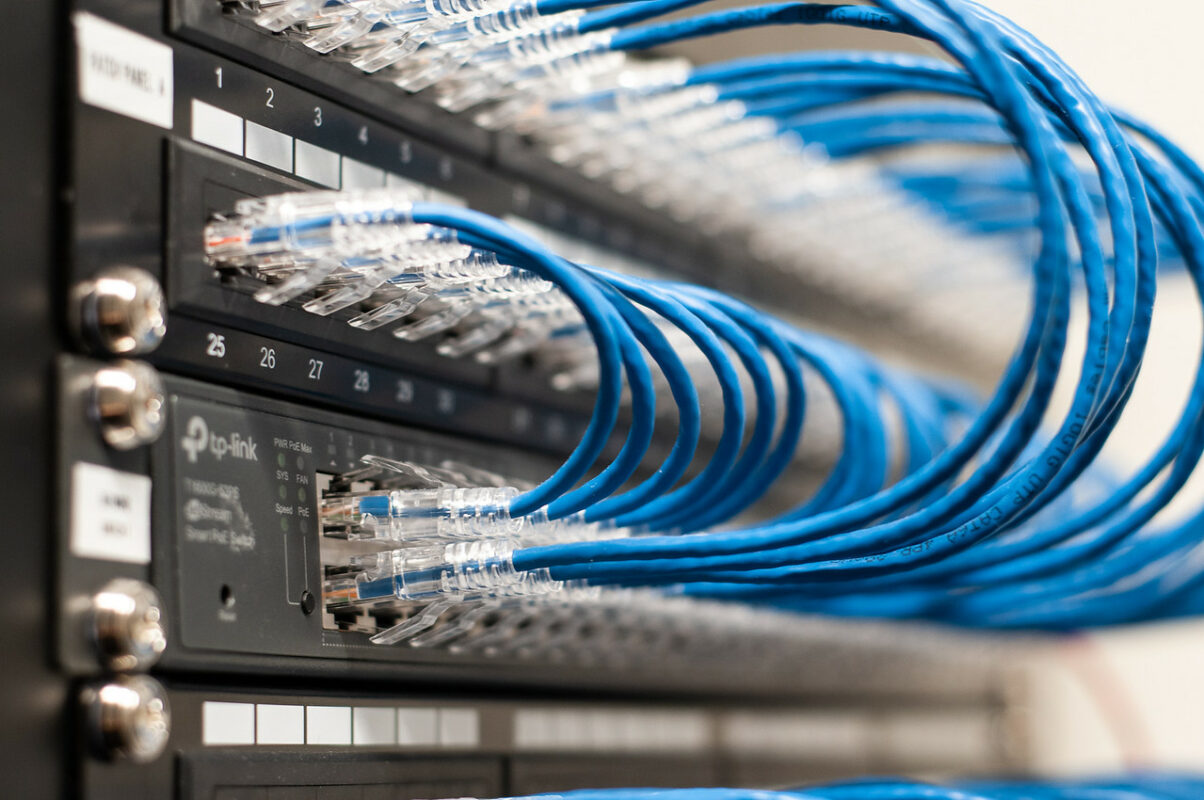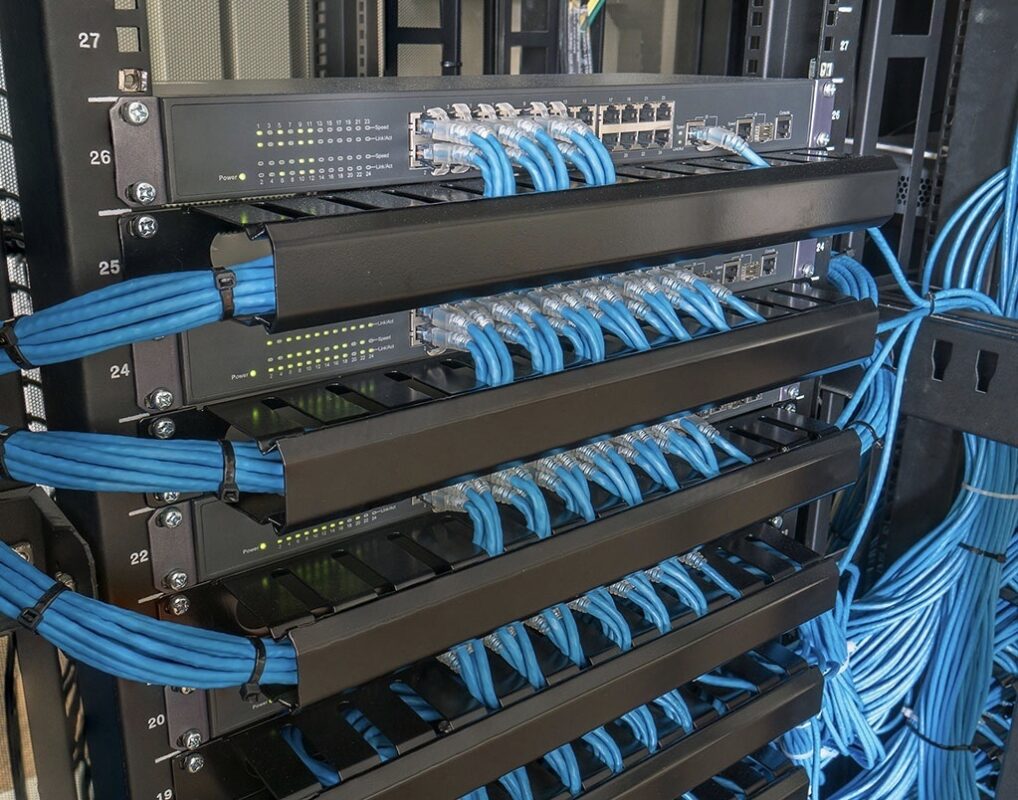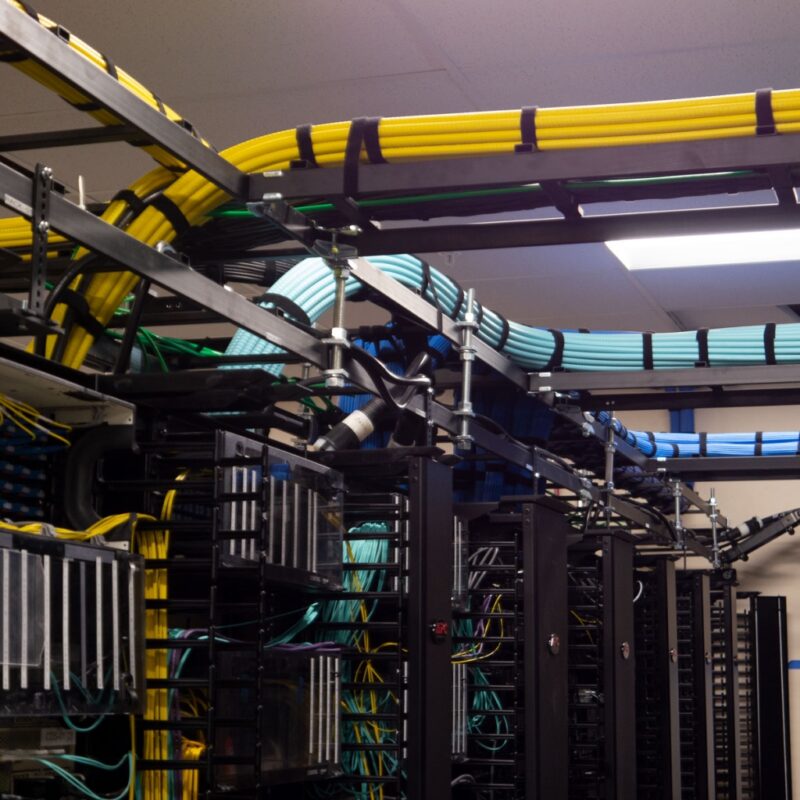Structured cabling system: what to know to implement it?
Let’s imagine an industry with many employees working on different machines and computers, and it is necessary to connect data to information regarding the functions performed. In this scenario, it is essential to have a structure that makes it possible for everyone to connect to a shared network, granting all the organization’s data.
This is where a structured cabling system comes in. It is an important ally for companies, enabling greater durability of their machinery and computers, and also the optimization of connections between existing electrical networks.
In this post, we will talk about structured cabling, its importance, advantages and how to implement it. Follow up!
What is a structured cabling system?
A structured cabling system is a set of cabling and connectivity products that integrate voice, data, video, and various industry management systems (such as security alarms, security access, power systems, etc.).
It is nothing more than a telecommunications cabling infrastructure, made up of many smaller standardized components. In addition, it is a flexible system that can be implemented in a variety of environments, from data centers to industrial production sites.
This cabling system allows communication between servers, which store data and IT systems, and peripheral network terminals. In short, it enables the connection to the telecommunications network in a company.
How important is this system?
When done correctly, a structured cabling system can make day-to-day operations much more efficient and without bottlenecks. Cluttered cabling can cause major connectivity issues due to tangled wires. There is no single way to create a structured cabling system for businesses.
Network cabling specialists can design, develop and install a custom cabling solution based on the demands and needs of the business. This allows the company to effectively organize and protect its voice, data and network cables. Thus making all processes more efficient and increasing industry productivity.
What to watch out for before implementing it?
It is necessary to take some care in the implementation of the structured cabling system. See some of them!
Hire accredited professionals
It is extremely important to count on the services of accredited professionals in the implementation of the structured cabling system in your company. After all, they will perform all the standardization of telecommunications cabling, in order to achieve the best results for the business processes.
Therefore, never give up hiring the best professionals in the market, who are duly trained and registered with CREA (Regional Council of Engineering and Architecture).
Check the local electrical network
Another very important point is to observe if the electrical network of the entire industry really supports different equipment, which are connected. What happens is that these stations often have many devices connected, generating huge energy consumption in the place.
It is very important to be careful, because an inadequate electrical structure, with many high voltage cables , can trigger a short circuit, causing serious accidents and a lot of damage. For this reason, it is also essential to analyze whether the electrical grounding performed actually complies with all ABNT standards.
Make a great finish
Another very important element is to make a great finish on the structured cabling, as it works with several wires and, in general, messes with the entire structure of the industry. Therefore, this change in the electrical structure must be as imperceptible as possible for those who enter the company’s departments.
The fact is that a job well done needs to give priority to safety, discretion and aesthetics in environments where optical fibers and cables are installed. Some elements that are part of the finish and need to be considered when contracting are protection items for fiber optics, tray, adapter for hole in the wall, nameplates, splice protector and connector for flexible profile.
What are the advantages of opting for this cabling system?
There are many benefits to implementing a structured cabling system. Meet some of them!
Simplicity
There is a high level of simplicity and objectivity in a structured cabling system. Many different IT devices and equipment are used at the same time in a conventional office environment. So operating everything in a single system eliminates the complexity of having many wiring infrastructures in place.
With this system, if a problem occurs, it is much easier to identify and resolve it. That is, the company spends much less time and money in the long run.
Cost benefit
Structured cabling is a very cost-effective and cost-effective solution. The highly flexible and scalable network will provide a continuous flow of data and will be able to handle the high demands required.
In this way, you will maximize productivity and business performance. This cabling system also minimizes maintenance and energy costs and eliminates the time and money invested in locating and correcting network problems.
improved flexibility
Another major benefit is that the system provides an enhanced level of flexibility, enabling performance optimization and driving business growth. This is because it supports changes, additions and changes easily and quickly, dramatically shortening installation time and ensuring recommended adaptability for any network infrastructure changes.
This flexibility also makes the system easy to dismantle and move to a new office location, for example.
Reduced risk of downtime
The fact is, there is a high risk of human error, due to the various disorganized cabling structures, which can lead to workflow interruptions and also network downtime. Therefore, a well-planned cabling system also means troubleshooting, after all, it is easier to identify and rectify faults quickly.
Optimization of the electrical structure
Compared to other types, structured cabling is more flexible and organized. It offers grid optimization and predictable performance, and enables additions or changes to your data and telecommunication systems without disrupting operations. This also helps your company, regarding all kinds of technological advancements in the future.












